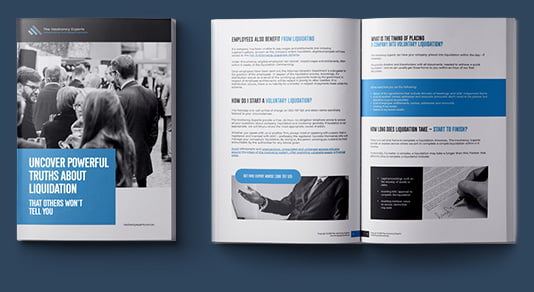Do you have a Tax Debt?
Garnishees can see the ATO recover Money from Your Bank Accounts or Debtors.
Call Free Expert Advice 24/7Garnishee Notices and the ATO
The ATO has power to issue Garnishee Notices to your bank or to people that owe you money with a direction that they pay the ATO the amounts owed to you.
A Garnishee Notice Can:
Cripple Your Business
Enable Direct Debit From Your Bank Account
Be Issued to Your Debtors (Accounts Receivable)
Understand the Risks
A Garnishee Notice requires the recipient to pay money owed to you, or held on your behalf, directly to ATO to reduce your debt.
Receiving a Garnishee Notice can take away any choice you may have had as to how to use those funds. The ATO can issue Garnishee notice to a person or business that holds money for you, or that may hold money for you in the future.
Do you need help or want to talk?
Call 1300 767 525 to speak with us, Free of charge, 24 hours a Day, or complete the form below and we will get back to you within 30 minutes!
Call FREE Expert Advice 24/7Tax Office Garnishee Notices. A Little more Technical Information
The following information1 is drawn from the current ATO guidelines in respect its use of coercive power to recover tax-related liabilities and other debts payable from third parties to, or holding money for, a tax debtor.
What is a Tax Office Garnishee?
Claiming money from a third party is achieved using Garnishee Notices under Section 260-5 of Schedule 1 to the TAA. This section empowers the Commissioner to require a third party who holds money for, or owes amounts to, a tax debtor, to pay that money to the Commissioner rather than paying it to, or continuing to hold it for, the tax debtor.
A person who receives a Garnishee Notice must pay the money owed or held for the debtor to the ATO and at law is taken to have been authorised by the tax debtor to pay that amount to the ATO.
When will the ATO issue a Garnishee?
The ATO will use garnishee notices where they consider that action to be the most effective method of obtaining payment of a debt.
In considering whether to issue a garnishee notice, the Commissioner will have regard to:
- The debtor’s financial position and steps taken to obtain payment in the shortest possible timeframe
- The extent of the debts owed to the Commissioner
- Whether Commonwealth revenue is at risk because of the actions of the debtor – such as paying other creditors ahead of the ATO
- The likely implications of the notice on the debtor’s business and ability to provide for a family.
The ATO will only consider withdrawing a garnishee notice provided that suitable alternative payment arrangements are made.
Tax Office Garnishee Notices. A Little more Technical Information
Who can receive a Garnishee Notice?
A Garnishee can affect:
- Payments taken through merchant facilities before they are deposited into a company bank account
- Funds held in a company’s bank account or other financial institution
- Funds held by other persons (including solicitors and accountants) for the benefit of the tax debtor
- Debts owed to the company by other persons or trading partners
- Shares held by the debtor company as an investment
A garnishee has the effect of creating a Statutory Priority by placing the ATO ahead of certain earlier secured creditors.
How long does a Garnishee last?
The obligations created by a garnishee notice continues until either the third party pays the Commissioner the total debt or the Commissioner subsequently notifies the third party that the garnishee notice has been withdrawn.
When will a Garnishee NOT be issued?
The Commissioner will not issue a garnishee notice in respect of a debt owed after a company has been placed into liquidation or voluntary administration.
How are funds recovered by a Garnishee allocated against tax debts of the debtor?
Funds recovered under a garnishee notice will generally be allocated to the liability with the earliest due date that contributes to the balance of the claim.
The information on this site should not be construed as legal or taxation advice and is offered for information and educational purposes only.
Free Consultation
Call 1300 767 525 anytime or fill in your details below and one of our expert advisers will get back to you within 30 minutes!
Low Cost Liquidations
Licensed Expert Answers All Calls 24/7
(Not a Call Centre Salesperson!)
Out Story and Key Credentials
We are a specialist insolvency practice providing free 24 hour advice to company directors & individuals throughout all states & territories of australia.
Our highly experienced & trusted professionals are qualified, licensed & regulated by the asic.
Established in 2006, we were the original, low cost liquidation provider and have since helped thousands of directors and hundreds of companies in a wide array of industries.
-
24/7 Helpline 100% of Calls Answered by Qualified Expert – not a call centre
-
ASIC License 296215 since 2006
-
Operating in All States of Australia
-
30+ Years Experience
-
1,500+ Directors Assisted Annually
-
85% of liquidations effectively completed within 4 – 6 months
-
Low Cost Liquidation Expert
-
Rated 5 out of 5 on Google Reviews
The Insolvency Experts - Everything you need to know - Free of charge and without obligation

The Ultimate Guide To Insolvency
Uncover POWERFUL TRUTHS about liquidation that others won’t tell you

